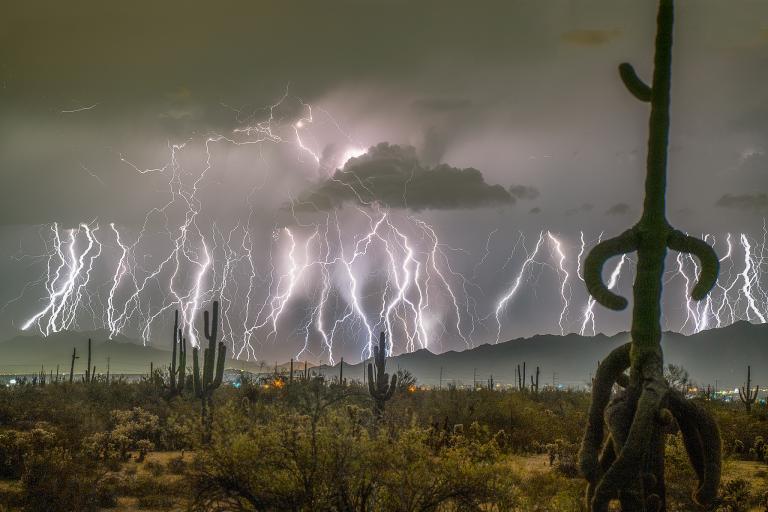News Flash

GENEVA, July 31, 2025 (BSS/AFP) - A new world record for the longest distance lightning flash was declared on Thursday -- a megaflash that stretched for 829 kilometres (515 miles) across the United States.
The huge flash occurred on October 22, 2017, from eastern Texas to near Kansas City, the World Meteorological Organization said.
The United Nations' WMO weather agency said the megaflash underlined the epic power of lightning -- and how flashes can pose dangers far from the original storm.
The previous record, also observed in the United States, happened on April 29, 2020 between Mississippi and Texas, with a lightning flash of 768 kilometres. It was certified as a record in 2022.
Both the previous and new records have a margin of error of plus or minus eight kilometres.
The 2017 storm produced several huge flashes. Three were analysed and were enough to formulate a ground-breaking definition of megaflash lightning.
Going back and re-examining the data from the landmark storm led to the discovery of a hitherto overlooked megaflash that was bigger than the one in 2020.
- 'Bolt from the blue' -
"Lightning can travel quite long distances away from the parent thunderstorm," Randall Cerveny, the WMO's rapporteur for weather and climate extremes, told AFP.
"That is why some people talk of a 'bolt from the blue' -- a lightning flash that seemingly comes out of the clear sky."
Cerveny, a professor of geographical sciences at Arizona State University, established the WMO's World Weather and Climate Extremes Archive in 2007.
It logs global records for temperature, pressure, rainfall, hail, aridity, wind, lightning and weather-related mortality.
An 11-member committee of experts based in the United States, Brazil, Germany, Spain, Nepal, Israel certified the new record.
Satellite-based lightning mapping has only been up and running since 2016 -- to short a time frame to determine patterns or trends in intensity, location or frequency.
"Give us another decade or so of data and we can start to address that," Cerveny told AFP.
Michael J. Peterson, of the Severe Storms Research Center in the United States, said that over time as the data record expands, "we will be able to observe even the rarest types of extreme lightning on Earth, and investigate the broad impacts of lightning on society."
- Deadly source of wonder -
The WMO said the new findings highlighted the dangers posed by lightning storms.
The agency is pushing for everyone on the planet to be fully covered by advanced early warning systems for hazardous weather events by the end of 2027 -- lightning included.
"Lightning is a source of wonder but also a major hazard that claims many lives around the world every year," said WMO chief Celeste Saulo.
The WMO's three other lightning records are:
-- Longest duration lightning flash: 17.102 seconds (margin of error 0.002 seconds) during a thunderstorm over Uruguay and northern Argentina on June 18, 2020.
-- Highest mortality: 469 people killed indirectly in Dronka, Egypt, when lightning struck a set of oil tanks, causing burning oil to flood the town in 1994.
-- Highest mortality (single strike): 21 people killed by a direct strike of lightning as they huddled for safety in a hut in Zimbabwe in 1975.